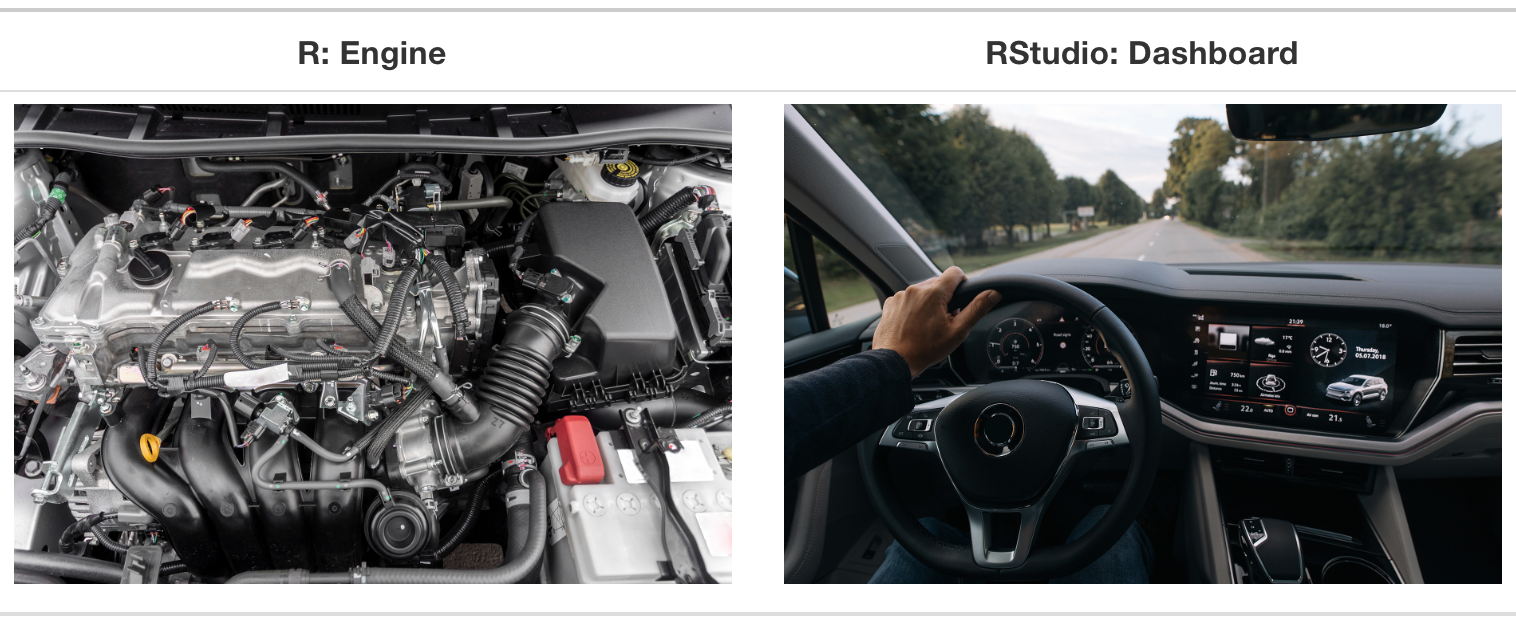Meet the toolkit
Lecture 2
Cornell University
INFO 2950 - Spring 2024
January 25, 2024
Announcements
Announcements
Discussion sections merging
- Sections 201 and 202 (9:05am)
- Sections 205 and 206 (11:15am)
If you cannot access RStudio Workbench yet, email info2950@cornell.edu
Application exercises 00 are ungraded
Complete homework 00 in Canvas
![]()
Making INFO 2950 a success
Five tips for success
- Complete all the preparation work before class.
- Ask questions.
- Do the readings.
- Do the lab and homework assignments.
- Don’t procrastinate and don’t let a week pass by with lingering questions.
Course FAQ
Q - What data science background does this course assume?
A - None! Sort of…
Q - Is this an intro stats course?
A - No. We presume you have already met the prereq and taken one of AEM 2100, BTRY 3010, CEE 3040, ECON 3110, ECON 3130, ENGRD 2700, ILRST 2100, MATH 1710, PAM 2100, PSYCH 2500, SOC 3010, STSCI 2100, STSCI 2150, STSCI 2200 🙄
While statistics \(\ne\) data science, they are very closely related and have tremendous of overlap.
Q - Will we be doing computing?
A - Yes! Lots of it.
Course FAQ
Q - Is this an intro CS course?
A - No – you’ve already taken CS 1110 or 1112
Q - What computing language will we learn?
A - R.
Q: Why not Python?
A: Come meet with me during office hours and we can talk about it!
Q: I don’t want to learn R! Will the course use Python again?
A: Probably when someone else teaches the course next year.
Course toolkit
Course operation
- Materials: info2950.infosci.cornell.edu
- Submission: Gradescope
- Discussion: GitHub Discussions
- Gradebook: Canvas
Doing data science
- Computing:
- R
- RStudio
- tidyverse
- Quarto
- Version control and collaboration:
- Git
- GitHub
Toolkit: Computing
Learning goals
By the end of the semester, you will…
- Conduct exploratory data analysis through data wrangling and munging as well as visualizations and summary statistics.
- Identify patterns in data to make predictions or to identify associations between variables.
- Evaluate the strength of patterns using statistical and substantive significance.
- Implement data science workflows using common, reproducible methods and software tools.
- Use data ethically and responsibly.
Reproducible data analysis
Reproducibility checklist
What does it mean for a data analysis to be “reproducible”?
Near-term goals:
- Are the tables and figures reproducible from the code and data?
- Does the code actually do what you think it does?
- In addition to what was done, is it clear why it was done?
Long-term goals:
- Can the code be used for other data?
- Can you extend the code to do other things?
Toolkit for reproducibility
- Scriptability \(\rightarrow\) R
- Literate programming (code, narrative, output in one place) \(\rightarrow\) Quarto
- Version control \(\rightarrow\) Git / GitHub
R and RStudio
R and RStudio

- R is an open-source statistical programming language
- R is also an environment for statistical computing and graphics
- It’s easily extensible with packages

- RStudio is a convenient interface for R called an IDE (integrated development environment), e.g. “I write R code in the RStudio IDE”
- RStudio is not a requirement for programming with R,1 but it’s very commonly used by R programmers and data scientists
R vs. RStudio
R packages
Packages: Fundamental units of reproducible R code, including reusable R functions, the documentation that describes how to use them, and sample data1
As of January 2024, there are over 20,000 R packages available on CRAN (the Comprehensive R Archive Network)2
We’re going to work with a small (but important) subset of these!
Tour: R and RStudio
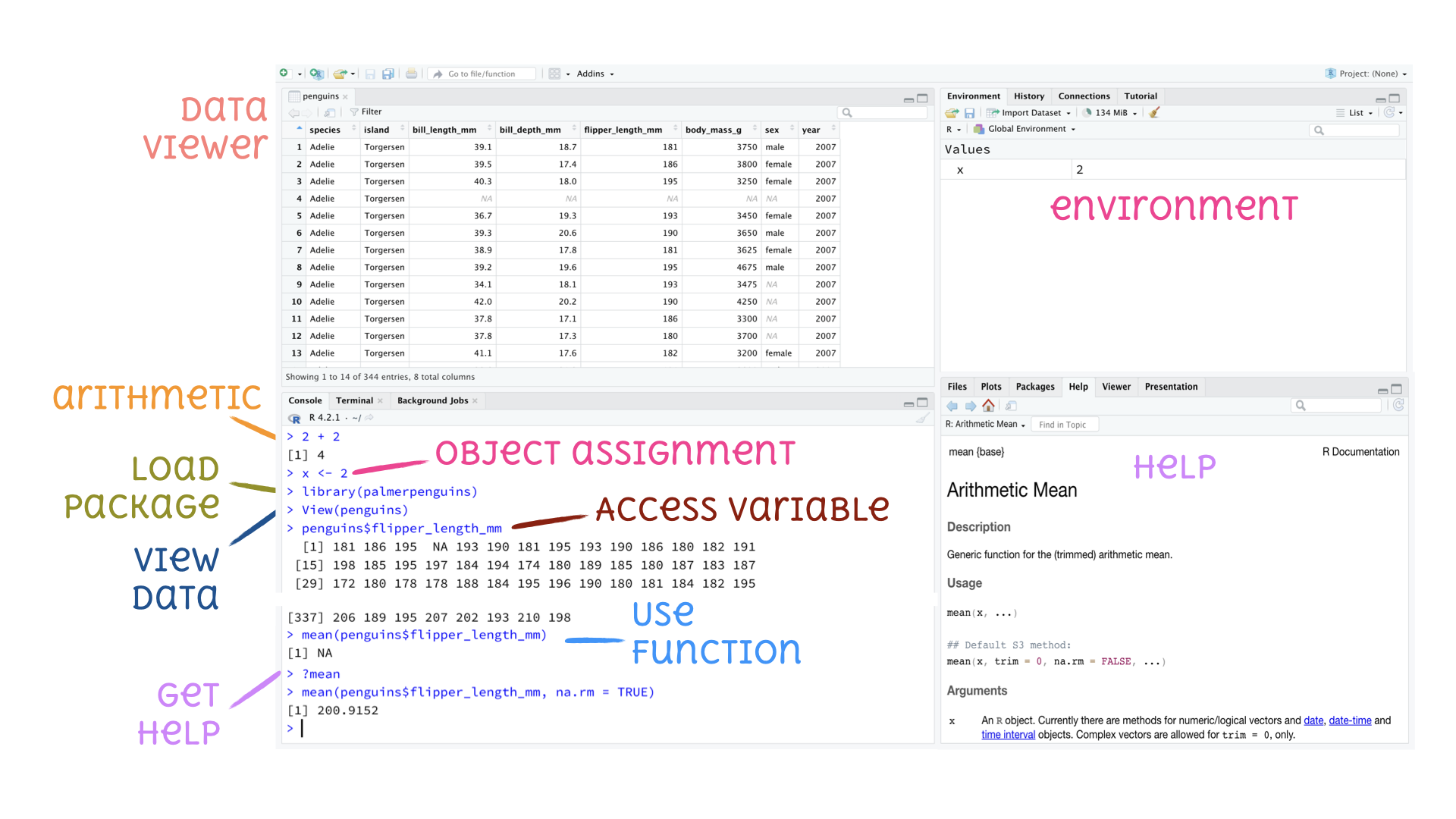
A short list (for now) of R essentials
R is a functional language
Functions are (most often) verbs, followed by what they will be applied to in parentheses:
Packages are installed with the
install.packages()function and loaded with thelibraryfunction, once per session:You never rename packages when you load them:
R essentials (continued)
- Columns (variables) in data frames are accessed with
$:
R and Python
It is not accurate to say that one programming language is inherently “better” than another, as the choice of language often depends on the specific use case and the individual’s personal preferences. However, R and Python both have their own strengths and weaknesses.
R is particularly well-suited for data analysis and visualization, and it has a large number of libraries and packages specifically designed for these tasks. R’s syntax is also designed to make it easy to manipulate and analyze data.
Python, on the other hand, is a general-purpose programming language that is widely used in a variety of fields, including web development, machine learning, and scientific computing. It has a large and active community that maintains a wide variety of libraries and packages for many different tasks. Python’s simple and easy-to-learn syntax makes it a popular choice for beginners.
Ultimately, the choice between R and Python will depend on the specific task you are trying to accomplish and your personal preferences as a developer. Both languages are powerful and have a lot to offer, and many data scientists use both languages in their work.
Major differences between R and Python
| R | Python | |
|---|---|---|
| Syntax | Functional language | Object-oriented language |
| Statistical learning | Developed by statisticians for statistical analysis | Meh |
| Machine learning |
|
|
| Visualization | ggplot2 | matplotlib + others |
| Package management | CRAN | pip/virtualenv/PyPI/Anaconda |
| Speed | Somewhat slower | Somewhat faster |
| Community | Academia and industry | Larger (general-purpose programming language) |
tidyverse
- The tidyverse is an opinionated collection of R packages designed for data science
- All packages share an underlying philosophy and a common grammar
Quarto
Quarto
Fully reproducible documents – each time you render the analysis is run from the beginning
YAML header to define document settings
Code goes in chunks
Narrative goes outside of chunks
A visual editor for a familiar / Google docs-like editing experience
Plain-text file format for easy editing and version control
More robust and flexible compared to Jupyter Notebooks
But you can still use the Jupyter engine to run Python natively
Tour: Quarto
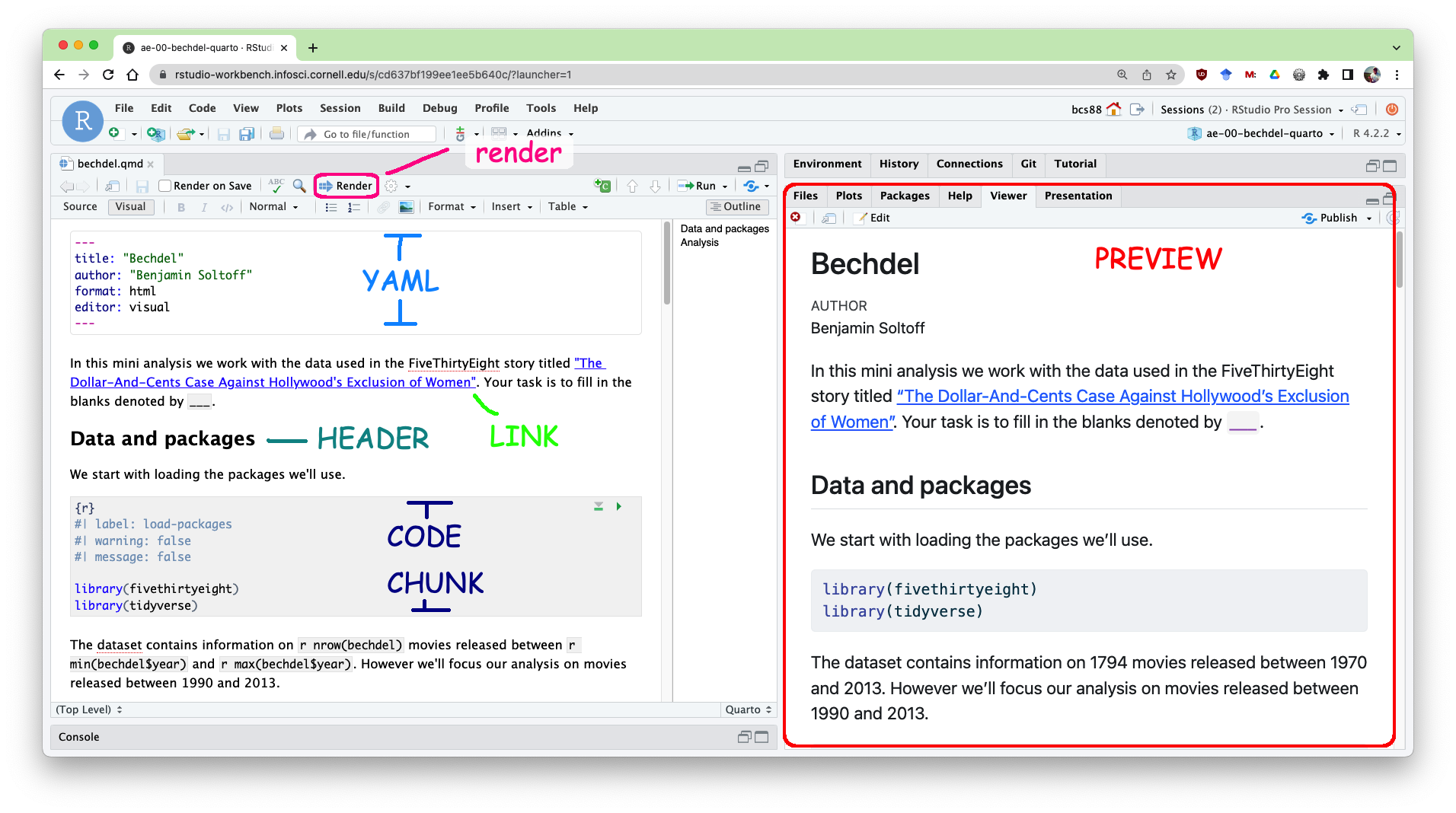
Environments
Important
The environment of your Quarto document is separate from the Console!
Remember this, and expect it to bite you a few times as you’re learning to work with Quarto!
Environments
How will we use Quarto?
- Every assignment / report / project / etc. is a Quarto document
- You’ll always have a template Quarto document to start with
- The amount of scaffolding in the template will decrease over the semester
The Bechdel test
The Bechdel test
In order to pass the test, a movie must have
- 👭 At least two named women in it
- 🗣️ Who talk to each other
- 🚫 About something besides a man

The Bechdel test

Your turn!
ae-00-bechdel-quarto
- Go to
ae-00-bechdel-quartoand clone the repo to RStudio Workbench. - Open and render the Quarto document
bechdel.qmd, review the document, and fill in the blanks.
Warning
ae-00-bechdel-quarto is hosted on GitHub.com because we have not configured your authentication method for Cornell’s GitHub. We will do this tomorrow in lab.
Toolkit: Version control and collaboration
Git and GitHub

- Git is a version control system – like “Track Changes” features from Microsoft Word, on steroids
- It’s not the only version control system, but it’s a very popular one

GitHub is the home for your Git-based projects on the internet – like DropBox but much, much better
We will use GitHub (Enterprise) as a platform for web hosting and collaboration
Versioning
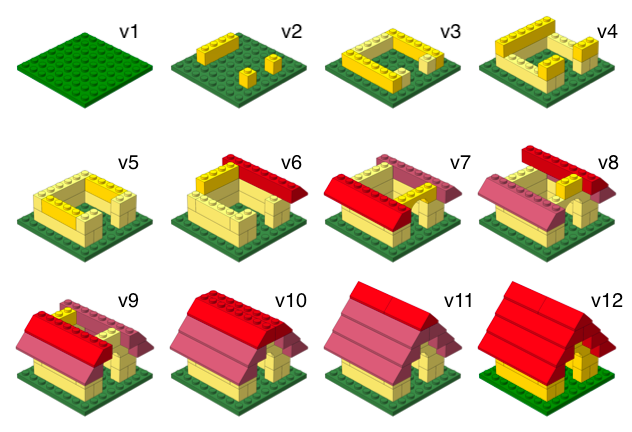
Versioning
with human readable messages
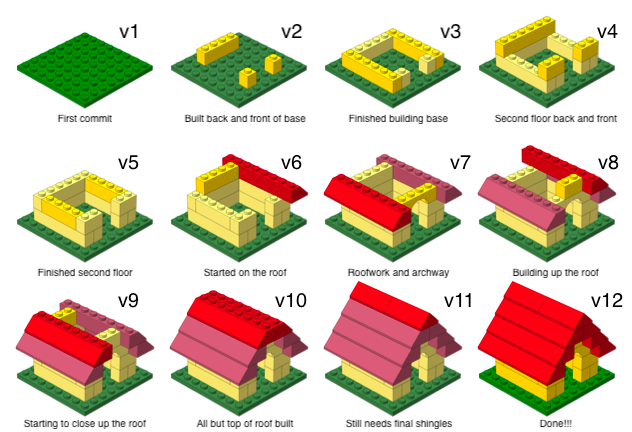
How we use Git and GitHub
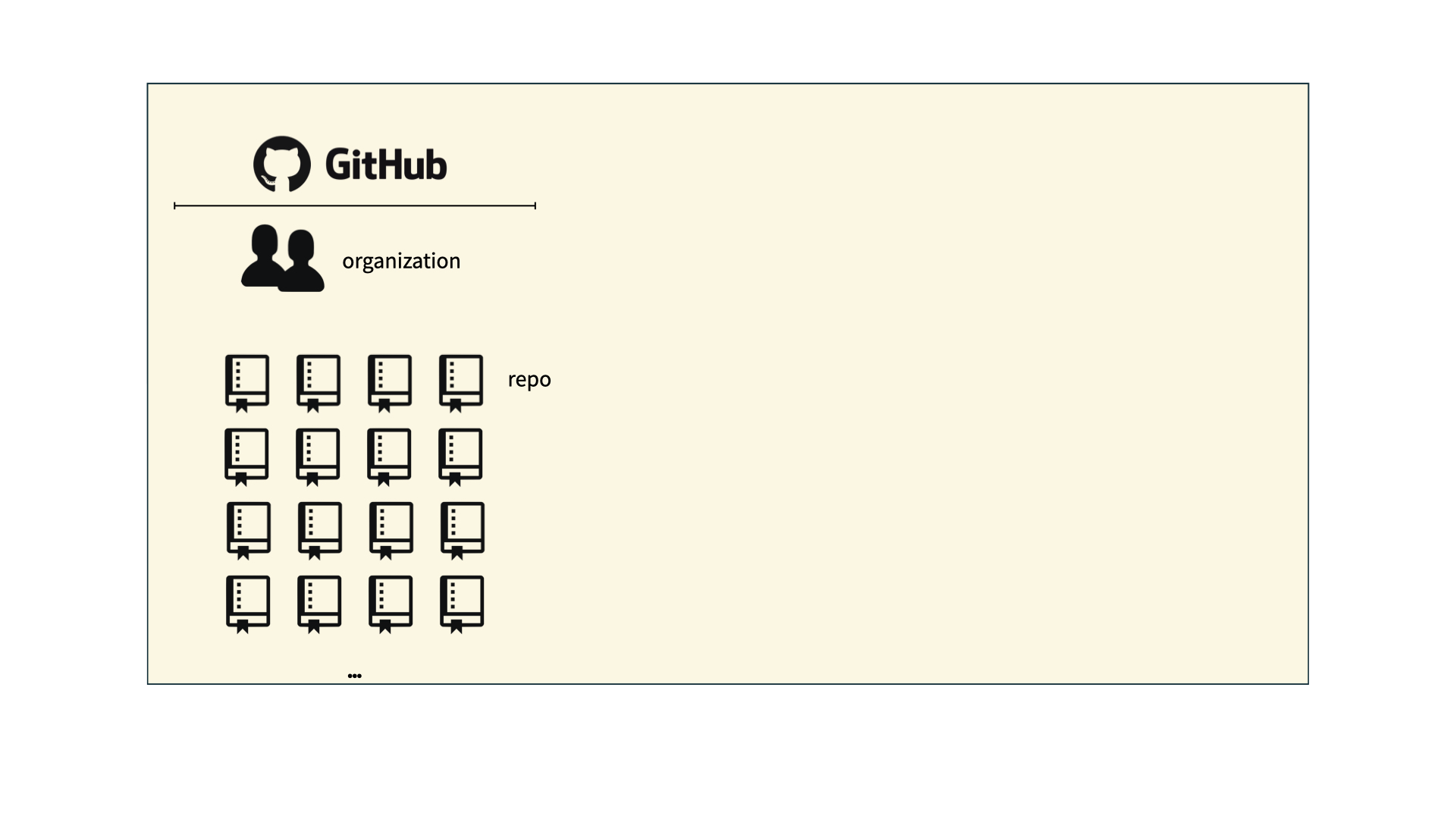
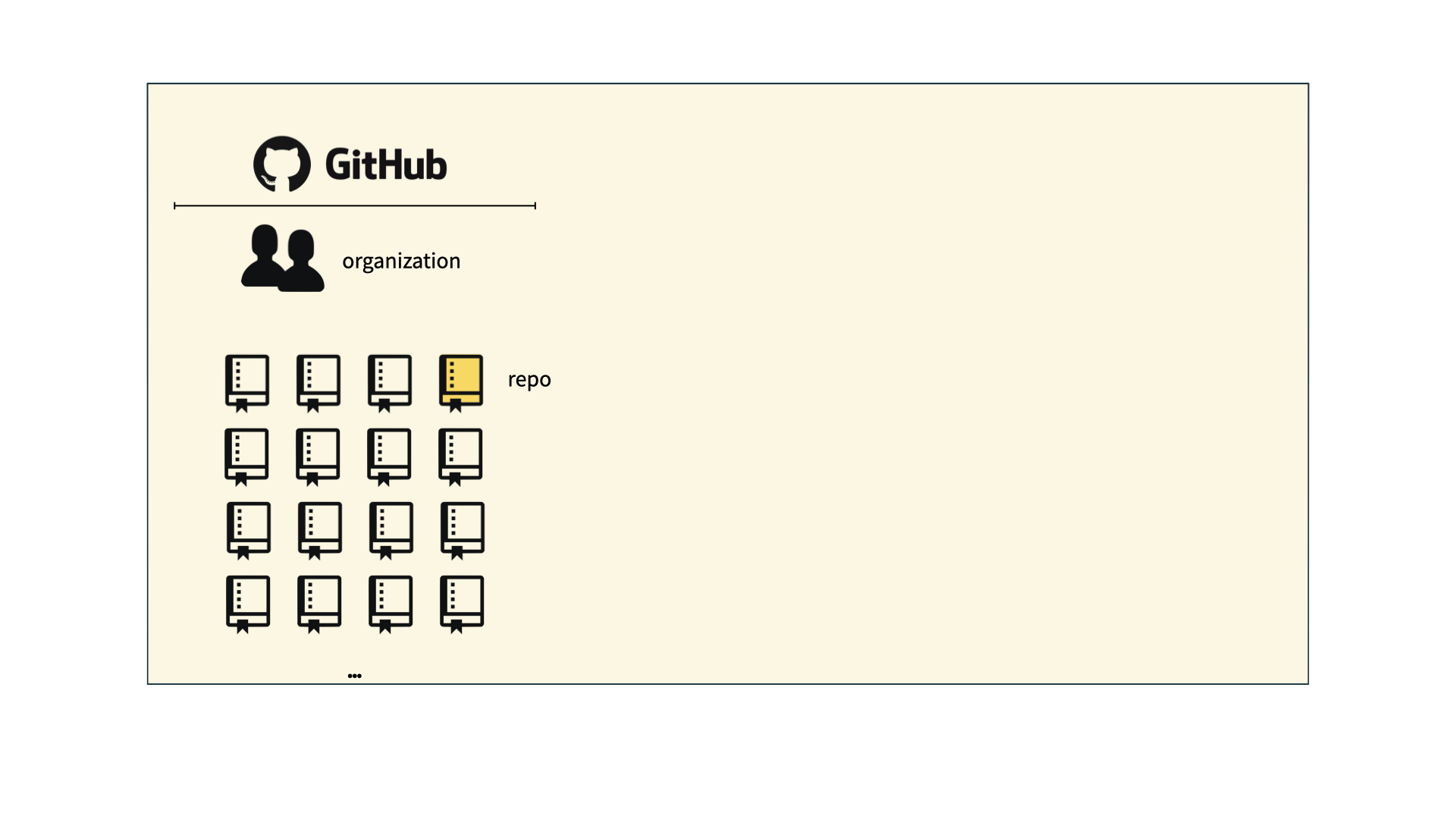
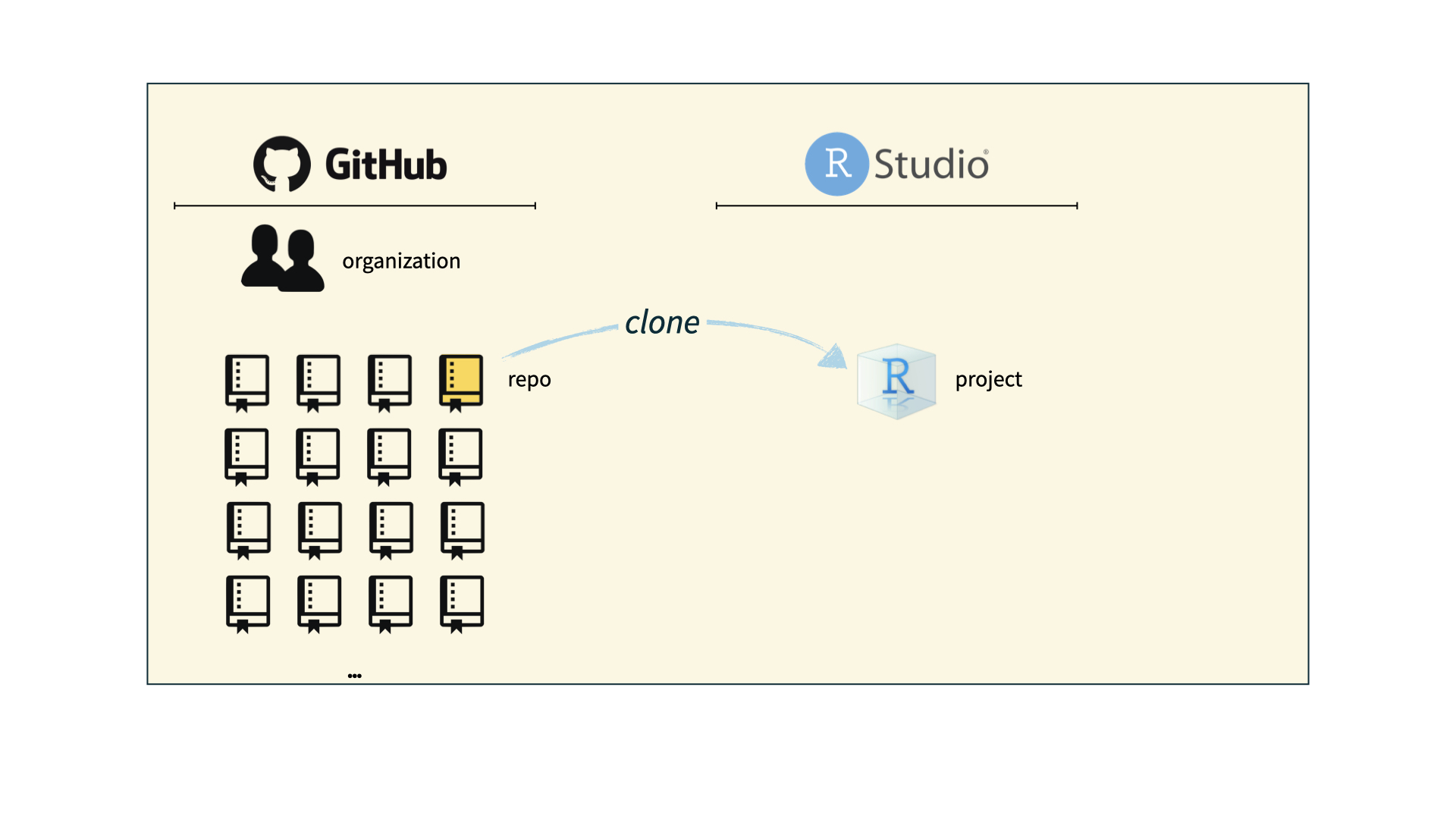
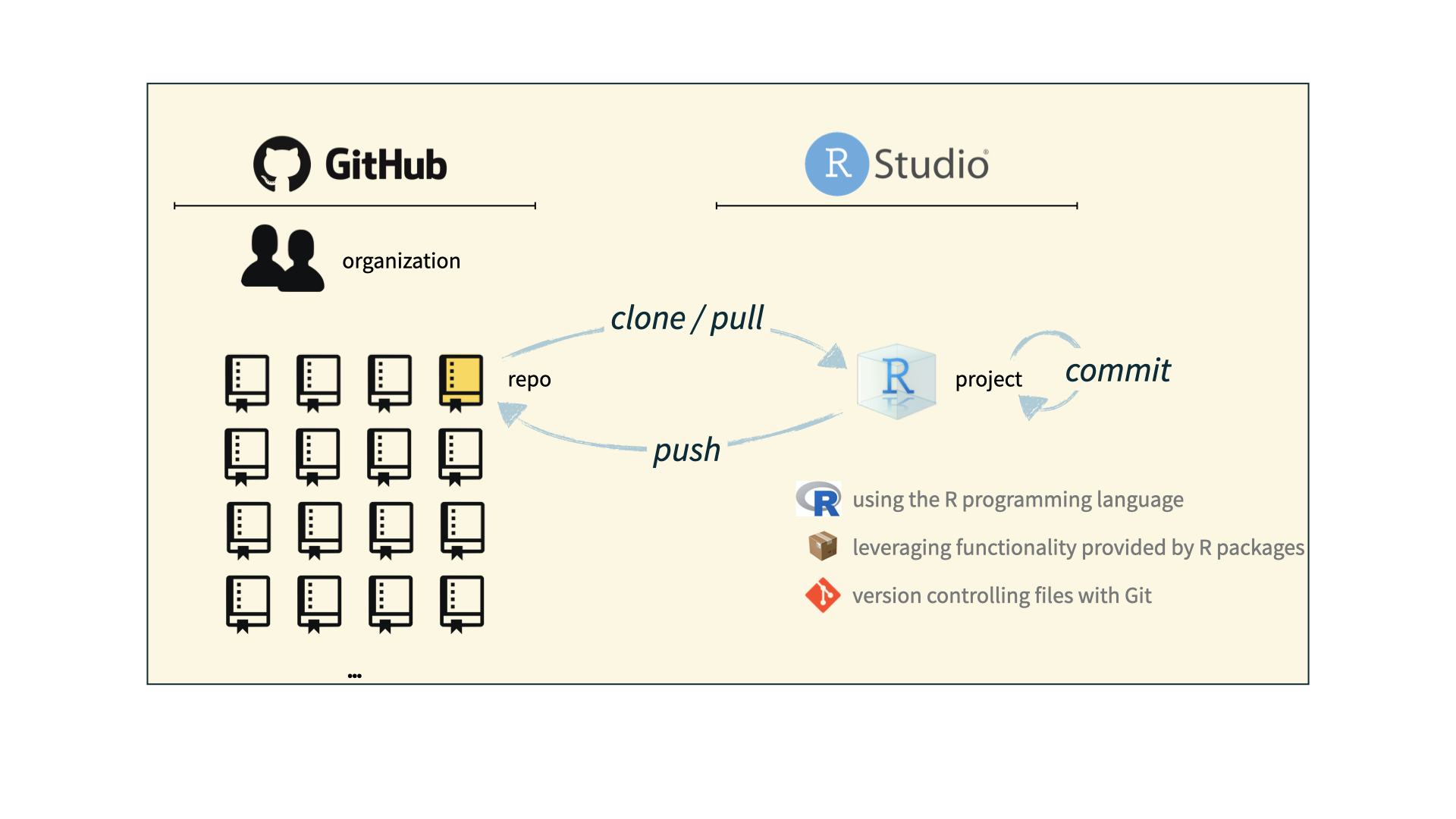

Git and GitHub tips
- There are hundreds of Git commands – you don’t have to know them all. 99% of the time you will use Git to add, commit, push, and pull.
- We will be doing Git things and interfacing with GitHub through RStudio, but if you Google for help you might come across methods for doing these things in the command line – skip that and move on to the next resource unless you feel comfortable trying it out.
- There is a great resource for working with git and R: happygitwithr.com. Some of the content in there is beyond the scope of this course, but it’s a good place to look for help.
Tour: Git + GitHub
- In lab section
- Make sure to access Cornell’s GitHub so I can add you to the course organization on GitHub

